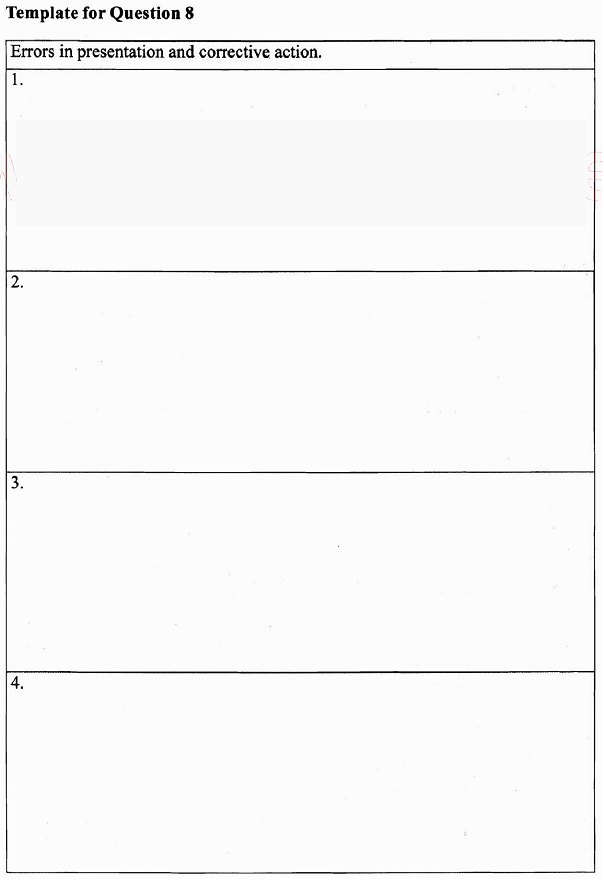Sharpen Your Knowledge with CFA Institute (CFA-Level-III) Certification Sample Questions
CertsTime has provided you with a sample question set to elevate your knowledge about the CFA Institute CFA Level III Chartered Financial Analyst exam. With these updated sample questions, you can become quite familiar with the difficulty level and format of the real CFA-Level-III certification test. Try our sample CFA Institute CFA Level III Chartered Financial Analyst certification practice exam to get a feel for the real exam environment. Our sample practice exam gives you a sense of reality and an idea of the questions on the actual CFA Institute CFA Level III certification exam.
Our sample questions are similar to the Real CFA Institute CFA-Level-III exam questions. The premium CFA Institute CFA Level III Chartered Financial Analyst certification practice exam gives you a golden opportunity to evaluate and strengthen your preparation with real-time scenario-based questions. Plus, by practicing real-time scenario-based questions, you will run into a variety of challenges that will push you to enhance your knowledge and skills.
CFA Institute CFA-Level-III Sample Questions:
HAS ONE PART Bailey Investments is a U.S.-based investment management firm. They began operations on January 1, 2004. Their client base has grown considerably over the last few years and in order to ensure accurate and consistent performance data they have decided to pursue GIPS compliance. The following includes composite data and notes relating to the first presentation for one of their composites in which they claim GIPS compliance. Bailey Investments has prepared and presented this report in compliance with the Global Investment Performance Standards (GIPS).
Notes:
1. Valuations are obtained by Reuters and computed using the U.S. dollar.
2. Bailey Investments is a dedicated equity portfolio manager that invests entirely in U.S. securities and has no affiliates.
3. The benchmark composition is 100% S&P 500. The annualized compound benchmark return is 8.15%. The annualized compound composite return is 8.06%.
4. Composite dispersion is the annualized monthly standard deviation of composite returns.
5. No modifications to the composites as presented here have occurred as a result of changes in personnel or for any other reason at any time.
6. Performance results are presented before management and custodial fees but after all trading commissions.
7. The composite includes discretionary and non-discretionary fee-paying portfolios. ListJour noncompliant items in the presentation. For each, state the necessary corrective action.

HAS TWO PARTS Tom Groh is the President of Opportunity Banks. Opportunity has historically operated in the northeastern United States, with most of its business in Maryland, Delaware, and New Jersey. Opportunity has been in business since 1987 and has built its business on making mortgages and construction loans to residential developers. Opportunity has been very profitable, because developers value the services the bank provides. This allows Opportunity to price their construction loans with higher interest rates. Opportunity services and retains ownership of the its loans. It historically has had a near-zero leverage-adjusted duration gap. In the most recent fiscal year, Opportunity has experienced important changes in their business as follows:
1. Due to pressure from local activists, Opportunity has stepped up lending in low-income areas.
Groh expects the default rate on these loans to be higher than the Loans currently in their portfolio.
2. Opportunity has bought a regional bank with operations in North Carolina, South Carolina, and Georgia. The acquired bank's loan portfolio consists mostly of commercial loans to small, local businesses.
3. A recent downturn in interest rates has caused many of Opportunity's variable rate mortgages to be refinanced to 15 and 30-year fixed-rate mortgages. Opportunity has retained the business of most of its customers who have refinanced.
a. In each of the scenarios provided, determine one effect on the investment objectives, constraints, or investment policies of the bank's security portfolio. Evaluate each scenario in isolation from the others.
HAS THREE PARTS One year has passed since HNW Advisors first started operations. Their overall equity portfolio has returned 28.2% versus a return of 22.4% for the S&P 500. The standard deviation of the S&P 500 is 20%, and Maggie Day, CFA, has estimated the standard deviation of HNW Advisor's equity portfolio at 45%. HNW Advisor's equity portfolio has a beta of 1.35, and the risk-free rate is 4.4%. A major HNW client is attempting to evaluate the relative performance of HNW's equity fund. The client is unsure whether the Sharpe measure or the Treynor measure is appropriate for the HNW portfolio.
HAS THREE PARTS Wyatt Washington is the portfolio manager for Mark Beitia, a recent retiree. He is currently exploring a change in Beitia's strategic asset allocation. He gathers data on the expected returns, standard deviations, and correlations for five assets. Using these market expectations, he derives an efficient frontier. Washington uses the following information in his construction of the asset allocation:
* Beitia's asset base = $5,000,000.
* Annual after-tax spending amount = $150,000.
* Estimate of future inflation = 3.5%.
* Beitia will donate $750,000 to his alma mater in one year in one lump sum.
* Risk-free rate = 4.0%.
* Beitia's income tax rate = 25%.
Washington forms four corner portfolios from his efficient frontier and calculates the following expected returns and standard deviations:
HAS THREE PARTS FOR A TOTAL OF 23 MINUTES Aaron Bell, a portfolio manager, is focusing his attention on investment style, and whether style should be a factor in investment decision making. Bell decides to play it safe and investigate how he can use different instruments related to style indices or indexing strategies to see if he can add value to his customers' portfolios.
Note: If there is any error in our CFA Institute CFA-Level-III certification exam sample questions, please update us via email at support@certstime.com.



 Try Before You Buy!
Try Before You Buy!